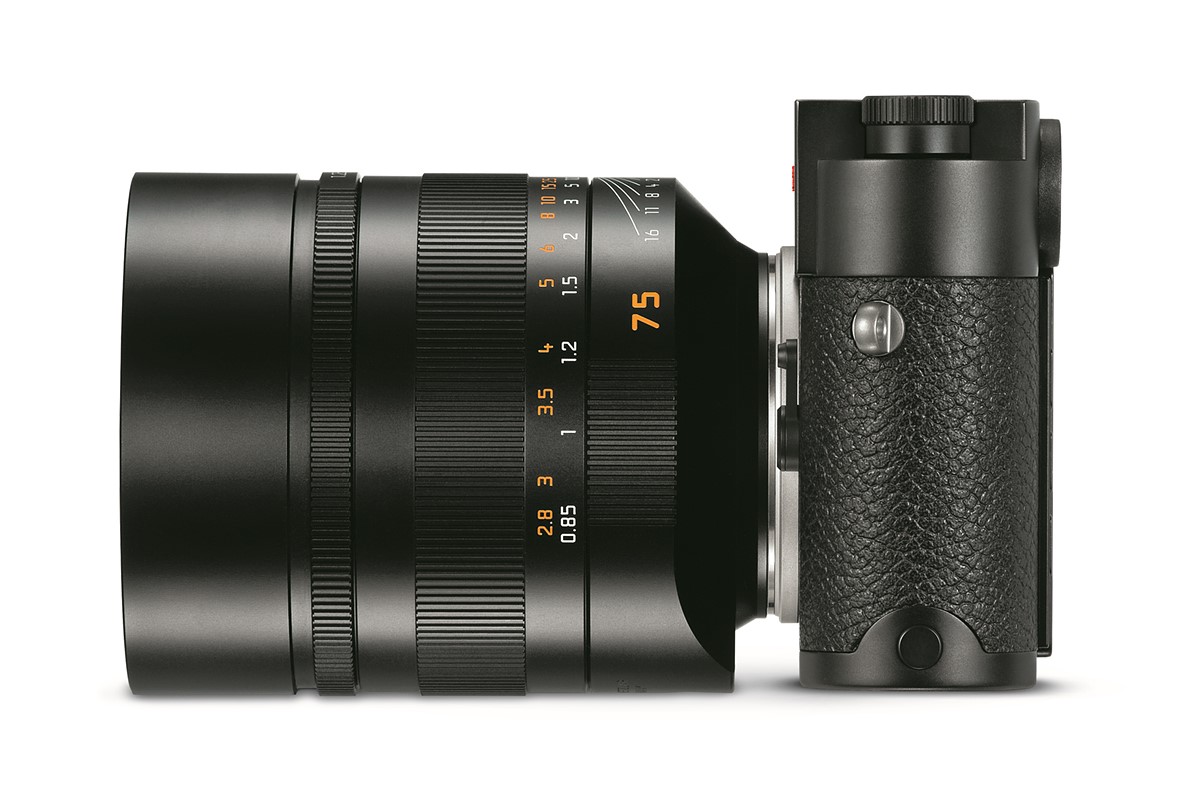Leica has just announced a new low-light monster, the Noctilux-M 75mm f/1.25 ASPH. lens. According to Leica, the new lens boasts ‘impeccable speed’ and ‘exceptional imaging performance’ as well as “hair-thin depth of focus [that] isolates subjects with extreme precision.”
The upgraded features of the Noctilux-M 75 mm f/1.25 ASPH. open up entirely new opportunities in portrait and close-up photography, including a shallower depth of focus than that of the Noctilux-M 50 mm f/0.95 ASPH. and a close focusing distance of 0.85m, making for a reproduction ratio of 1:8.8 for even more precise isolation of subjects. Additionally, the eleven blades of its iris ensure a soft and harmonious bokeh in out-of-focus areas.
The Noctilux-M 75mm f/1.25 ASPH. features the convenience of an integrated lens hood, which can be extended or retracted in one simple twist. The lens is complemented by a tripod adapter for safe and secure mounting of the lens on a tripod.
The Leica Noctilux-M 75 mm f/1.25 ASPH will be available at Leica Stores, Boutiques and Dealers at the beginning of 2018. According to Leica, the lens will retail for $12,795.
Leica Noctilux-M 75 mm f/1.25 ASPH Lens Becomes Official
- Extremely fast f/1.25 maximum aperture affords notable control over depth of field for selective focus shooting, and also benefits working handheld in low-light conditions.
- Short-telephoto 75mm focal length offers a slightly compressed image quality that is well-suited to portraiture and close-up images, especially when used in conjunction with the shallow depth of field afforded by the bright maximum aperture.
- Nine elements in six groups optical design is comprised entirely of anomalous partial dispersion and low chromatic dispersion glasses in order to significantly reduce color fringing and produce imagery with a high degree of clarity.
- Two large-diameter aspherical elements are also used to control spherical aberrations for improved sharpness and reduced distortion.
- A rear floating element system is employed to maintain consistent image quality throughout the focusing range, even at the minimum focusing distance of 2.8′.
- An 11-blade diaphragm produces a rounded and pleasing bokeh quality.
- Built-in extendable lens hood shades and protects the front element to reduce lens flare and ghosting. Additionally, the front of the lens is threaded to accept 67mm screw-in filters.
- A tripod adapter is included to facilitate easy and secure use of this lens when shooting from a tripod.
Technical Data
| Angle of view (diagonal, horizontal, vertical) |
For 35 mm format (24 x 36 mm):
~ 32°, 27°, 18° For Leica M8 models (18 x 27 mm): ~ 24°, 20°, 14°, equivalent to FL of ~ 100 mm in 35 mm format1 |
| Optical design
Number of elements/groups Aspherical surfaces Position of entrance pupil (at infinity) |
9/6
2 26.9 mm (in front of the bayonet) |
| Focusing
Working range Scales Smallest object field/ largest reproduction ratio |
0.85 m to ∞
Combined metre/feet graduation For 35 mm format: ~ 212 x 318 mm / 1:8.8, |
| Aperture
Settings/functions Smallest aperture |
With click stops, half-stop detents
16 |
| Bayonet | Leica M quick-change bayonet with 6-bit bar coding for Leica M digital cameras2 |
| Filter mount | Inner thread for E67 screw-mount filters, non-rotating |
| Lens hood | Integrated, with twist-out function |
| Viewfinder | Camera viewfinder3 |
| Finish | Black anodised |
| Dimensions and weight
Length to bayonet flange Largest diameter Weight |
~ 91 mm
~ 74 mm ~ 1055 g |
| Compatible cameras | All Leica M-Cameras3, 4, Leica SL-Cameras with Leica M-Adapter L |
More details can be found at Leica Camera.

